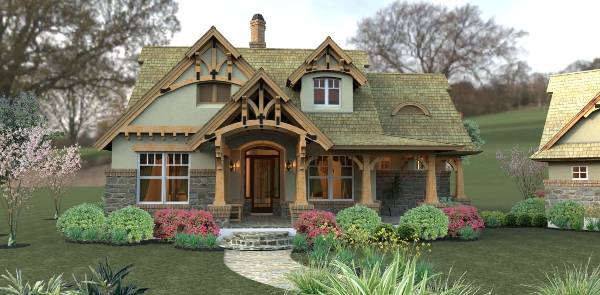Depending on where you plan on building, heating in the winter months will definitely be a concern. The crackling of a fire is a timeless winter tradition, but whether you want a fireplace for a yule log, making winter s’mores with the kids, or just recreating the feeling of a ski lodge in your living room there is one downside to a wood burning fireplace, and that is heat loss.
When a fire is lit most of the warm air is pulled out of the room to feed the fire. A lot of the heat energy produced by the fire is lost up the chimney and in the materials around it. Though the charm of a wood burning fireplace sounds great, it’s not a very eco-friendly way to warm your house, especially when it is below freezing. That’s where a fireplace insert comes in.

What is a fireplace insert?
Fireplace inserts are designed to increase the efficiency of a fireplace. The fireplace insert is constructed as a fireproof box surrounded by steal or cast iron and fronted by insulated glass. This creates a closed combustion system where the steal and cast iron help to trap the heat. Some inserts even have a blower that pushes hot air back into the room. If properly installed, a fireplace insert can be much more efficient than a traditional wood burning fireplace.
Electric Fireplace Inserts
Electric fireplace inserts are the simplest and least complicated to install. There is no combustion involved and therefore no chimney is required and thus no permit. Electric fireplace inserts include a small heater which outputs to 5,000 BTUs (British Thermal Units). They also allow you to adjust the flame size and can be used with or without the heat component.
When it comes to installing an electric fireplace insert you only have to make sure that the insert fits the fireplace opening to work properly. The cost of operating an electric insert depends on the electrical rates in the area.

Gas Fireplace Inserts
If you have access to natural gas where you are building, you might want a gas fireplace insert. Installing a gas fireplace insert takes more time but the energy produced is between five and eight times as much as electric inserts (25,000 to 40,000 BTUs), enough to comfortably heat a medium sized room.
The gas fireplace insert is aided by two tubes that run from the insert and up the chimney. One tube draws in fresh air to feed the fire and the other is for exhaust. Once it is installed there is very little maintenance needed aside from cleaning the fireplace door. The gas burns cleanly so there is no need to clean your chimney, but it can be difficult to determine if the gas is leaking, so a carbon monoxide detector is a must.
Wood Fireplace Inserts
Wood fireplace inserts offer the beauty of an open fireplace with the performance of a state-of-the-art wood stove. Wood fireplace inserts are less effective than gas fireplace inserts, with an efficiency rating of only 50 percent.
The main disadvantage of a wood fireplace insert is the emissions. The smoke from the wood sticks to the chimney as creosote, which is combustible, or released as air pollution. However, the EPA has stepped in and certified some wood fireplace inserts to make sure that they burn wood efficiently. If sized and installed correctly, an EPA-certified wood fireplace will reduce fuel consumption and maintenance on both the chimney and insert.
When it comes to supplemental heating, a fireplace is a great way to add ambiance, but if you are concerned about heating costs, then a fireplace insert can improve the efficiency of your fireplace and bring many cherished memories. If you aren’t ready to consider adding a fireplace insert just yet, but you are still concerned about heating costs, then take a look at The House Designers’ Collection of ENERGY STAR® approved house plans.
- Building a House in Florida – Styles, the Process & the Costs - July 26, 2019
- Add Appeal to Your Home with These Design Tips - March 19, 2015
- Preparing Your Home for Spring - March 15, 2015
